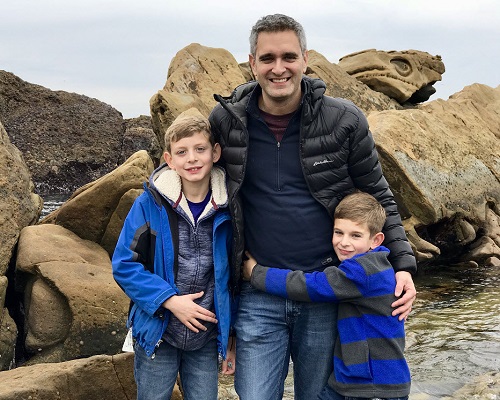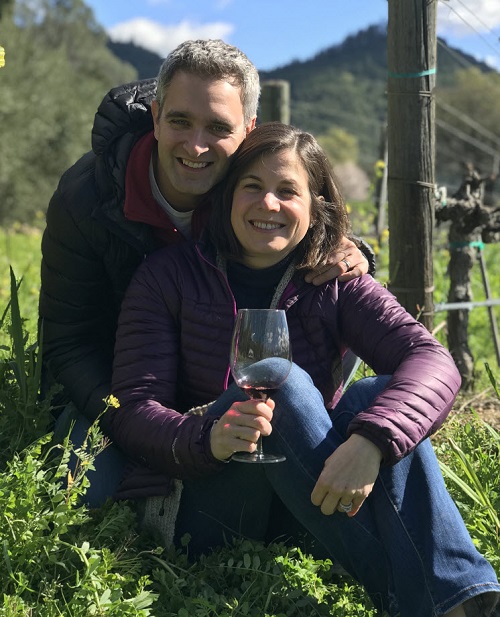2019-Feb-07
Did you know? You can share this story using the social media icons on the left. Please include the hashtag #WeAreCisco. You can also rate and comment on the story below.
Hardware, Software, and Silo-Busting

Training rats to do your bidding may seem like an unlikely start to becoming one of the youngest Cisco Fellows. Yet, that’s how Rakesh Chopra’s gift for engineering first emerged.
The rats were of the digital variety. They were part of a civilization-building game called “Hammurabi” that Rakesh played on a Texas Instruments computer as a child.
If you amassed too much food in the game, the rats would bring a plague. By manipulating the game’s source code, young Rakesh learned how to make the rats retrieve more food instead.
“It got me into reverse engineering other things in the house,” he says. “I continued messing with things as I grew up.”
Rakesh became a Distinguished Engineer in 2015 at the age of just 39. Today, he’s a Cisco Fellow — the culmination of his 21-year career, and counting, with the company. He joined Cisco in 1997 straight out of college after earning his bachelor’s at Rensselaer Polytechnic Institute in New York state.
Faced with choosing a career in hardware or software, Rakesh chose a hardware focus. He liked the idea of physically building something.
He joined Cisco in Massachusetts as a Hardware Engineer 1 — the bottom of the ladder. By 2011, he had worked his way up to Principal Engineer and has only kept climbing since.
A Broad Base of Support
Somewhat ironically, the accomplishment that likely propelled Rakesh to Fellow status is a program he can’t talk about.
“It’s shrouded in NDAs and secrecy,” he laughs.
This much he can say: It has to do with Cisco’s 2016 acquisition of an Israel-based, venture-backed fabless semiconductor company, Leaba Semiconductor, in which Rakesh played a pivotal role.
He counts the program among his career highlights. (Watch this space for future developments!)
Rakesh also credits his meteoric rise to the skilled engineers he has worked alongside.
A huge plus? Managers who he respects and enjoys working with. They include the four leaders he’s worked for since joining Cisco — Jerry Pianin (who hired him and still works with Rakesh 21 years later), Steve Jacobs, Mike Milano, and his current boss, Ravikrishna Cherukuri.
“Ravikrishna astounds me,” Rakesh says of Cisco’s SVP of the Core Hardware Group. “His technical depth. His ability to understand how business and technology relate together. I’ve never met anyone who can straddle those worlds so effectively.”
Other engineers and technical leaders who helped Rakesh include his first Cisco mentor, Jeff Shaw. And Mo Tatar was a constant support and advocate who would take the time to sit with Rakesh and explain everything to him.
“My success is solely based on other people’s technical and business guidance,” Rakesh says.
Sharing a Vision
Then there’s Rakesh’s own unique skill set. He has the ability to combine tremendous technical depth with broad, horizontal understanding. He also communicates a vision that allows him to bring expertise even when moving into new areas of technology and — perhaps most crucially — to “simplify the message.”
“Technology is an amazing thing, but it can also be daunting,” he says. “If you can’t simplify the message enough to make people understand its impact, you can lose the benefit of that technology.”
Rakesh has helped steer many critical discussions. He has also worked on a broad range of products, including Cisco’s enterprise and service provider class routers such as the 7200 series, 7500 series, ASR 1000, ISR, GSR, NCS 6K, and ASR 9K.
“It feels great when a project I’ve worked on makes it to market and is deployed by a customer,” he admits.
Beyond Hardware vs. Software
In recent years, Cisco’s pivot toward software subscriptions has led some industry observers to speculate that the company was abandoning hardware altogether.
Chuck has said that’s emphatically not the case. And Rakesh is a passionate advocate for Cisco’s interest in hardware.
“There’s a set of software that’s truly abstracted from hardware — like Cisco Webex — but there’s another set that runs on traditional products such as routers and switches,” Rakesh explains.
“With this latter set, software and recurring revenue are so important, but if you don’t own the underlying hardware, it becomes impossible to have the margin sets that Cisco wants due to product differentiation and cost structures,” he continues. “So owning technology in silicon, optics, and hardware, in general, is fundamental.”
A blended approach is a differentiator for Cisco, and it’s proven to resonate with customers.
Case in point: our massively successful Catalyst 9000 switching platform — which Rakesh had only “cursory input” into.
Beyond the hardware-software discussion, Rakesh attributes some of his effectiveness to working across organizational silos.
Historically, he says, Cisco has operated by optimizing within discrete pillars, such as networking, collaboration, or security. But a silo-busting approach — working across those boundaries and understanding how everything you do has an impact on every other piece of the puzzle — is key to “global optimization.”
“The Common Hardware Group has proved to be a silo-busting group,” he says.

Investing in Disruption
Rakesh was born in Washington, D.C. to an English mother and Indian father who met at Oxford and moved to the United States when his dad got a job with the World Bank.
Rakesh moved to California four years ago after his wife of 12 years, Michelle, took a joint professor appointment in the law school and medical school at Stanford University.
Adjusting to the change took some time for Rakesh, who left many good friends back in Massachusetts. But he loves hiking, skiing, mountain biking, and being out in nature, so he’s enjoying his new proximity to beaches, mountains, and the city. Being able to meet his Cisco coworkers face to face is an added perk too.
As for the future, Rakesh says one of his priorities is carving out more family time with Michelle and their two boys, Evan, 10, and Austin, 8. Both he and Michelle have demanding jobs, so finding a good work-life balance can often be a challenge.
On the professional front, Rakesh says he’d like to see Cisco get more comfortable with long-term disruptive investments.
In the hardware world, he clarifies, it often takes five years of work before a product hits the market. It calls for a technology-driven view of product development to break with competitors and come up with a differentiated product.
That flips on its head the conventional wisdom of building products based on what customers ask for.
“We still need that input, but, at the same time, we have to look at what the technology can enable,” Rakesh says. “In other words, forget about what you’re hearing; what can we actually build?”
Related Links
Connect everything. Innovate everywhere. Benefit everyone.
Share your thoughts!
Log in to rate and commentShare your thoughts on the story here!